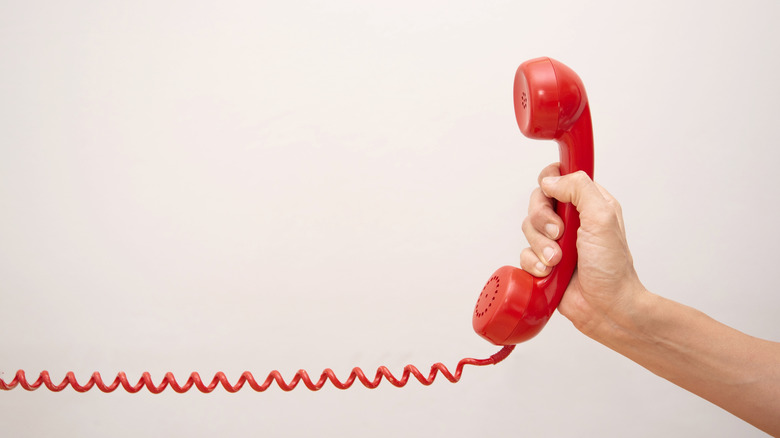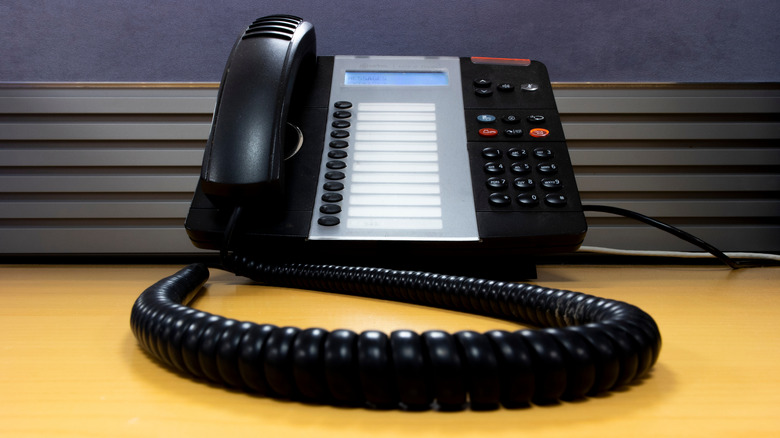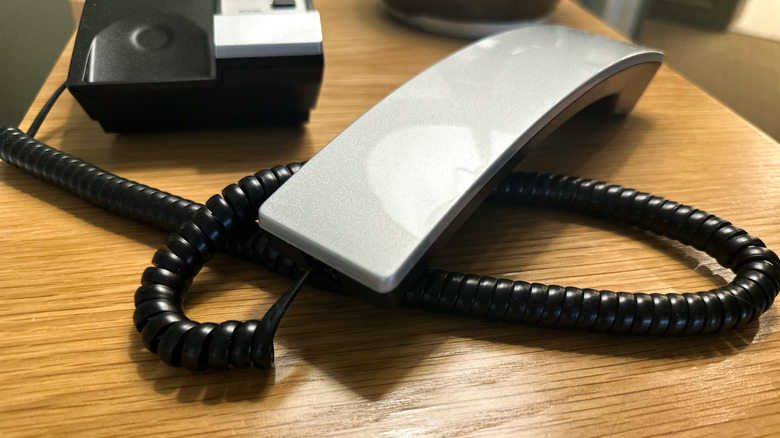Why Do Most Landline Phones Have Coiled Wires?
When many of us think of telephones, devices like the best Android smartphones ever released and the best and worst iPhones of all time are among the first things that come to mind. For the most part, landline phones, especially those with coiled wires connecting the handset to the base, have become a relic of the past. If you still have a landline phone in your home, it's likely a cordless one, not the old-school style where the handset was plugged into the wall and kept you tethered to one spot during every call. Still, if you ever used one of those old phones or just saw one on TV, you probably remember how the springy cords could stretch across an entire room. What you may not know about those coiled cords is that they weren't just a design choice. Instead, they served a practical purpose that made them a staple of the landline era.
Long before we all had smartphones in our pockets and Bluetooth headphones on our ears, landline phones with coiled cords were how people stayed connected. And that coiled wire had an important role in how these landline phones worked, with the shape making the handset easier to use. Since these cables could stretch and retract without tangling, users didn't have to worry about excess cord getting in their way, they could easily move around while using the phone. Even though landline phones with coiled wires have been in decline for years, you'll still find them in many workplaces and call centers because they're a reliable, tangle-free option for everyday communication.
Coiled wires make landlines easier to use
The coiled wires on landline telephones go by a few names. You may hear them called curly cords, coiled cables, spiral cords, retractable cables, or coil cords. Most of us don't give them much thought, but coiled cords were made to make landline phones easier and more comfortable to use. If phones had straight cords instead of coiled ones, it would make it a lot more difficult for users to move around, adjust their position, or keep the cord out of the way during a call. This feature helps when someone wants to lean back, turn their chair, or grab something without hanging up.
Along with giving users freedom of movement, coiled cords keep things from getting messy. If landlines were manufactured with long, loose cables, they would be prone to twisting, knots, and tangling. That's why cords with a coiled shape are used — they help prevent those issues. While many of us are busy decking out our homes and offices with smart devices to make them more secure, the coiled wire for landlines has persisted because no high-tech gadgets do what it does so well. You'll often see landline phones with coiled cords in offices. In busy spaces, like those you find in offices with open floor plans and shared desks, coiled cords can help keep things neat and organized. Since the cord pulls back on its own, there's no need to constantly straighten or wrap it. It's a small feature that makes landline phones more practical to use.
The coiled design protects the cord from damage
While having coiled wires in landlines improves usability, that's not the only reason you'll see these curly cords. The coiled shape also helps preserve the integrity of the cord itself. When you lift a handset that has a coiled cord, because of its design, the tension is evenly distributed across its length. This design minimizes the risk of fraying and protects the inner wiring — something that's especially important in places where landlines get a lot of use, like call centers or reception desks, where someone might pick up and set down a handset repeatedly throughout the day.
Since coiled cords pull back on their own when they aren't in use, they solve another problem: it's less likely to drag on the floor or get caught on things nearby. That means there's less stress on both ends of the cord, which helps it last longer and keeps the inside wiring from wearing out. Over time, this simple design helps keep calls clear and reduces the chances of dropped phones or the need for repairs.


